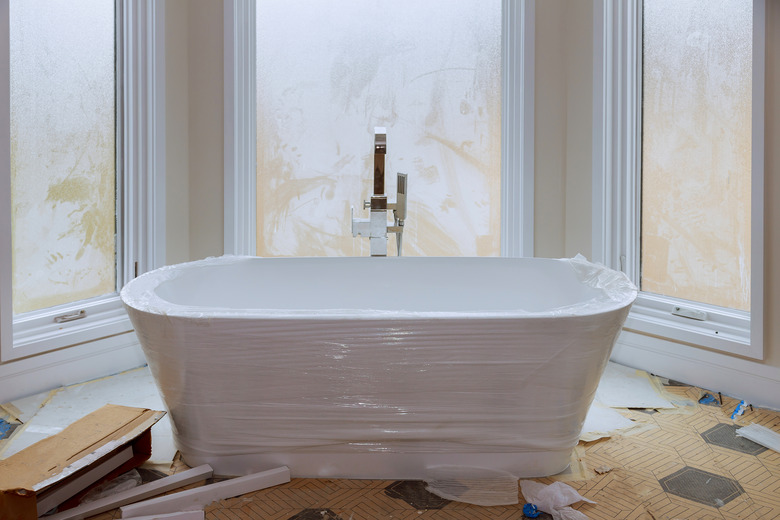How To Replace The Floor Under A Bathtub
We may receive a commission on purchases made from links.
A bathtub full of water can be very heavy — a standard-sized bathtub can hold 100 gallons of water, each weighing 8 pounds, explains Badeloft USA — and the additional weight of an occupant can mean a weight of 1,000 pounds or more on your floor. The support under the tub must be strong enough to stand up to the weight.
The subfloor usually consists of plywood over standard floor joist supports, and it's designed to support a massive water weight just fine — unless it's damaged. Since the bathtub can be a source of spills, splashes and other leaks, the floor under the bathtub can weaken over time.
Bathroom Floor Damage
Bathroom Floor Damage
Since most bathroom subfloors are wood, problems can occur when the wood weakens. Most of the time it's water damage; water can get into the wood, causing it to decay, break apart or even rot. Even the smallest of spaces can allow water under the tub, and with no way to dry, it's likely to continue to do damage before the homeowner can even identify it.
It isn't always water, though; mold from other sources, termites or carpenter ants can all cause structural damage to the floor or floor joists. If insect or mold damage has shown up elsewhere, it's usually a good idea to check the floors in critical places like the bathrooms and kitchen.
Moving the Tub for Repairs
Moving the Tub for Repairs
The tub will need to be removed before the floors can be worked on. Older tubs made out of materials like cast iron or ceramics can weigh hundreds of pounds just on their own; even a standard tub will likely require a couple of able bodies to move it. Before removing the tub, be sure to shut off the water to that bathroom; if there's no isolation valve, shut off the water to the entire house. Drain as much water as possible from the lines using other faucets.
The next step is disconnecting the tub itself from the water lines. This includes pipes to the faucet (hot and cold) and the drain pipe. Disconnect these by following the instructions for the type of drain and piping connections. This usually requires opening the drywall about 6 inches above the tub in order to access the piping to be disconnected. Check the drawings of the bathroom to confirm where to find the piping.
After this, the tub will need to be pried up since most tubs are caulked into place. First, use a utility knife to slice the caulk. Prying up the tub is likely to require a crowbar and a good amount of manpower. Once the tub is free, move it to clear the area.
Assessing the Damage and Replacement
Assessing the Damage and Replacement
Examine the possible damage. The required repairs will depend on the extent to which the floor needs to be fixed or replaced. Cut out the visibly damaged parts, as well as another 2 to 3 inches from any visible damage. This will remove any residual moisture or mold that may not be visible but can still cause damage. Once the floor and/or subfloor have been cut away, examine the floor joists for damage.
Replacing these parts requires knowledge of floor construction. Replace floor supports as necessary, then cut the new subfloor and floor to fit the damaged area as needed. Be sure to caulk the seams between the old and new subfloor to prevent accidental leakage. The detailed instructions will depend on the type of floor and the area of damage and can be provided by a qualified contractor.
